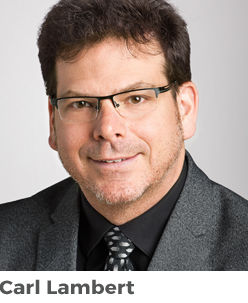The Internet of Things will transform the way life insurance actuaries operate. It will allow them to design simpler and more efficient products, reduce policy issue times, and offer more suitable kinds of coverage.
These are some of the predictions made by Carl Lambert, vice president of business intelligence for Canadian property and casualty insurance at The Co-operators. For Lambert, actuarial science is a science that has lagged behind. He sees this in general insurance and, in an interview with The Insurance and Investment Journal, he said that he thinks it “is even worse in life insurance”. In his opinion, actuaries would do well to keep up with the Internet of Things.
“At the moment, we are not advanced. Life insurance underwritten with little pee samples and blood tests is a way of doing business that dates back to the 1950s. Forward-thinking companies are beginning to give more weight to lifestyle and way of living in their selection process. Exercise, a healthy pace of life, now account for more,” he comments.
Rewarding policyholders
He points out that, for the life insurance business, the Internet of Things allows companies to implement programs that reward policyholders for the number of paces they walk. “This is what Manulife (via subsidiary John Hancock Insurance) and several other insurers in the United States have done, as well as some in Europe,” says Lambert.
He points to Manulife’s Vitality program in the United States as an example. The insurer has also just reached an agreement with The Vitality Group to offer a similar service to Canadians; later this year, it plans to offer life insurance products that reward policyholders based on their living habits.
The Internet of Things refers to the useful data that physical objects can collect and emit. Lambert explains that it is the use of real-time information that does not originate in our insurance files. Lambert points out that applications which allow you to control objects remotely over the Internet or by satellite have proven their worth, such as mobile applications that allow remote control of household appliances, or the system that manages the BIXI bicycle rental network. He also refers to the Roost smart battery which, equipped with a transmitter, can relay data to a smartphone via a Wi-Fi network. As a result, the user can receive a remote warning and check the battery’s charge level.
 Intact Financial Corporation, iA Financial Group, and Desjardins General Insurance.
Intact Financial Corporation, iA Financial Group, and Desjardins General Insurance.
In the United States, Lambert notes that life insurers have reduced the amount of time it takes to issue a policy by using the Internet of Things. He reports that they have gone from an underwriting process that took two to three weeks to one which only lasts a couple of days or less. “This is what happened at the CUNA Mutual Group life insurance company in the United States.” At CUNA, 70% of sales to 25 to 45-year-old clients are completed in one day.
Using the Internet of Things, Berkshire Hathaway Travel Protection (BHTP) developed related services that are almost instantaneous. The insurer saw that 65% of its sales took place over a mobile device and about 20% on a computer or tablet, says Lambert. The company offers protection in the event of flight cancellation, and it now interacts immediately by text message with the client when a cancellation message appears on the airport’s departure screen.
“You’re stuck on the tarmac in Chicago with a missed connection. With an exchange of text messages, the company can issue you a new ticket, and a few minutes later compensation will be paid directly into your bank account.”
BHTP is plugged into all of the available information on flights worldwide, and it is connected with all of its policyholders. This is why it can offer them, almost instantly, an alternative to a flight that has been cancelled at the last minute, explains Lambert.
Examining big data intelligently
While it is increasingly present in the daily activities of American insurers, companies in Canada have been shy about making use of the Internet of Things. “No insurer has yet managed to take the lead in this field in Canada. If companies do not get on board today, they will have to follow the crowd once the trend intensifies,” believes Lambert.
The Co-operators wants to take on this leadership role. At the beginning of 2015, the insurer announced plans to hire five analysts for its analytical team in 2016. “We have hired twelve permanent employees since December, as well as more than six students, reveals Lambert. We are about to hire two more people. Then we will be fully staffed.”
The Internet of Things is an important part of his team’s research work. By expanding the team, The Co-operators hopes to increase its predictive analytics and big data management capabilities.
According to Lambert, analytics will allow insurers to deal with new risks. In general insurance, it has enabled advances such as telematics. He believes it will make it possible for companies to deal with the advent of intelligent cars, as well as to insure drones and cyber risks.
Lambert points out that it was analytics that allowed The Co-operators to launch its flood insurance product in Alberta, after studying the prevailing models in other countries. “Insurers had no data on floods in Canada, where this risk was not covered. We worked with hydrologists. We analyzed river, storm, and coastal data, as well as data on rising water levels and accumulation. Having models is one thing, but will they be sensitive to differences in the magnitude of a disaster, between one inch of water and a foot of water? To answer this question, we relied on insurance coverage that exists in other countries.”
Mitigating risks
The analysis of big data also allows companies to take steps to mitigate risks. “In the High River area, people decided to build a cement wall.” But they did not build it any which way, says Lambert. “Our water propagation models show that, depending on its shape and height, a wall can remove between 0% to 100% of the risk. One must wonder if a wall that removes 100% of the risk in one place will increase the risk somewhere else. To succeed in having a robust model, it required contributions from engineers, mathematicians, actuaries, hydrologists, and statisticians.”
According to Carl Lambert, tomorrow’s insurers will face the challenge of selecting relevant material from big data, at the risk of becoming lost in it. Those who fall behind may react by rushing in, he believes.
“Big data constitutes a huge data set, private or open. Open data is public data to which everyone has access. Among the sets of open data, there is a database that allows one to find out where bicycle accidents took place in Montreal, but not who had them. All major cities in the world have similar databases. For example, the government of Canada web site has more than 200,000 open databases, with free access. We have to hunt for what suits our needs in open data, not just anything, because we will get lost.”
Consumer profiling
Lambert recalls a conference on the subject which he recently attended in the United States. It involved the use of Facebook data for commercial purposes. “On Facebook, people learn that, in terms of eye care, you like Iris and I prefer Newlook. This could help build your consumer profile: Iris targets people who will pay more for service and NewLook goes after those who are more price sensitive.”
He believes that analytics make it possible to demonstrate that while two people who obtain the same home insurance may seem to enter the same type of information over the Internet, there are differences in the two resulting applications. This information can be reused in terms of customer service, and to offer products that are better suited to different customer segments.
Lambert also revealed that The Co-operators is working with various partners in analytics, including certain reinsurers. While he did not reveal their names, he did note that Swiss Re and Munich Re are recognized in the industry for being very advanced in this area.








